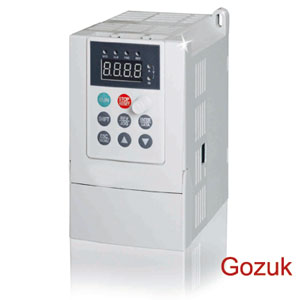A VFD creates variable frequency voltages by rectifying the incoming AC voltage to DC then switching the DC on and off, reversing polarity (+ then -) to generate the desired AC frequency and voltage output. Digital control logic determines when each solid-state electronic switch turns on/off. A very basic circuit has six switches, connecting the plus and minus DC voltages to the three phase outputs.
For forward rotation, the A phase voltage switches turn on first, then B phase, then C phase with the proper timing to generate three phase voltages at the desired frequency.
When the logic gets a reverse command, it turns on B phase first, then A, then C. (BCA=CAB=ACB rotation).Was the ground fault in effect at the time the motor was misbehaving? Perhaps the drive has a protective feature to protect itself from a ground fault. and this is what caused the symptom.
I do not know if that was the problem or not. I have experienced a floating delta and a motor that had a internal ground fault with a ancient Square D drive have the same symptoms. I cannot say that that is your problem. The motor in my case ran fine across the line (with a ground fault of course). Everyone else though the drive was bad. I proved it was not by connecting to a good motor.
For test purposes next time this happens, do you have a motor near the VFD that you can swing the VFD output to? There is a lot more to VFD controls, logic and switching but the basic idea is the same.




 Company
Company

